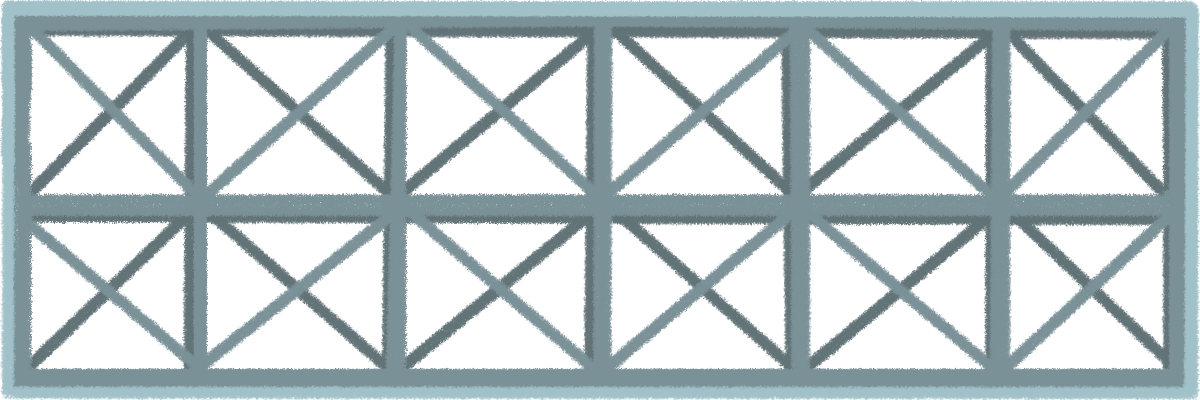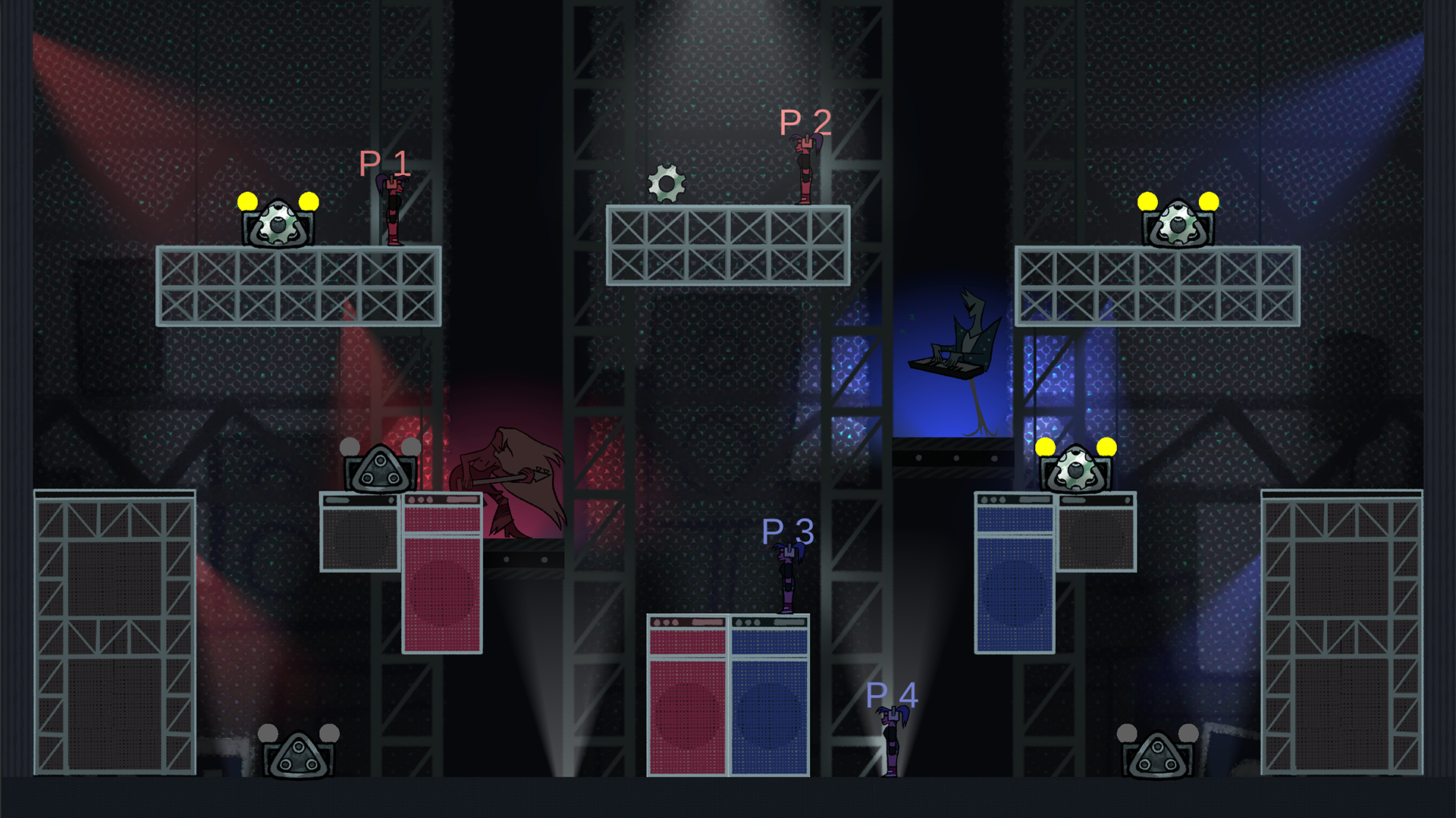
The final version of Level 1, the only stage with complete art
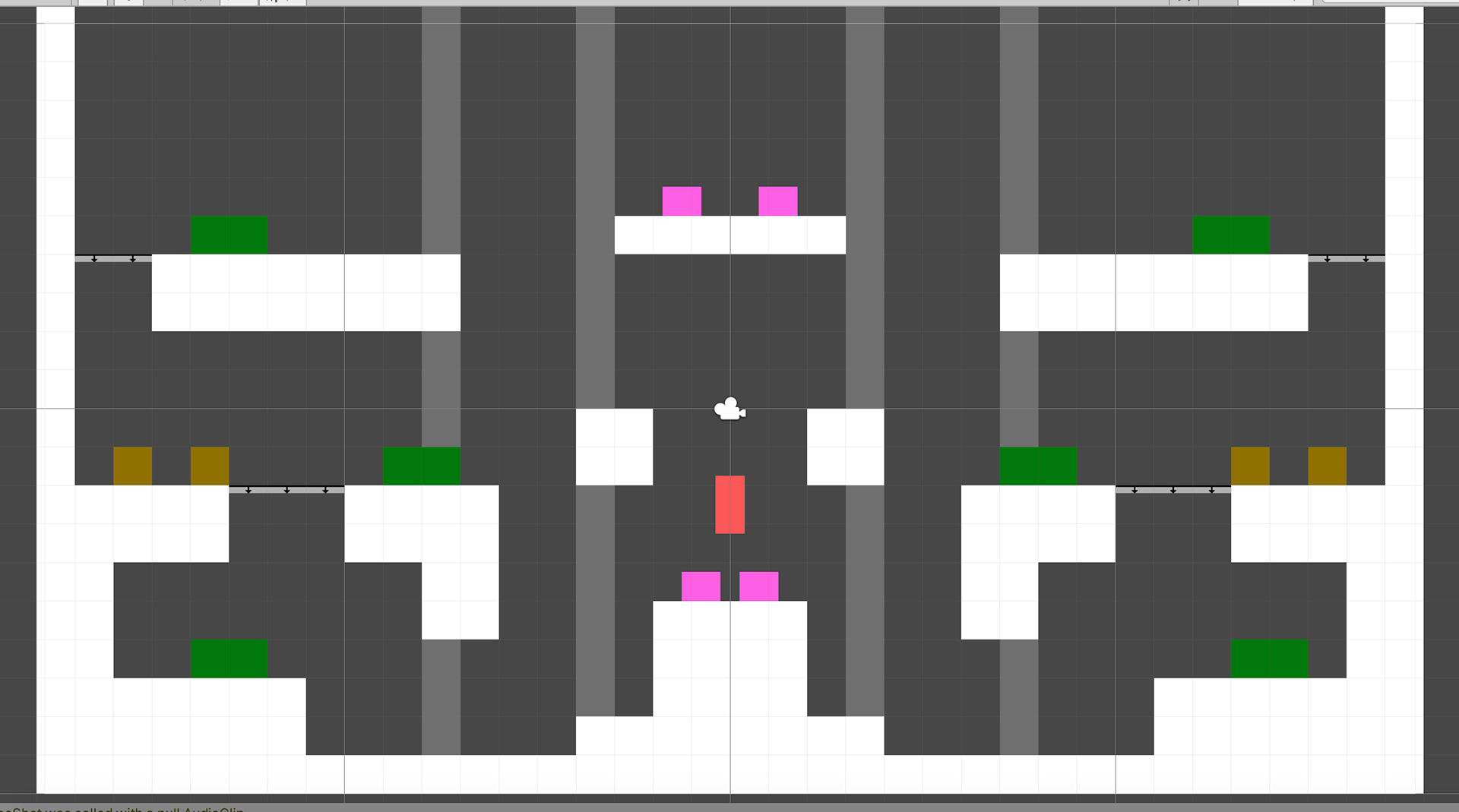
The original prototype version of Level 1. The lower machines were too enclosed, which we quickly learned was not fun to play
Date: February 2020
Roles: Game Designer, Level Designer, Environment Artist
Tools: Unity, Photoshop
Fight Song is a 2v2 platforming game, created in under 48 hours for Global Game Jam 2020. Players take the role of roadies back stage at a battle-of-the-bands concert, and are tasked with repairing their team's performer lift to get their soloist on stage first. There's a limited number of spare parts (cogs) to keep the lifts running, so players must fight over them to keep their lift moving faster.
I designed, tested, and built all 5 levels in the game while working in tandem with the programmers working on the player controller. I requested wall jumping as the main traversal mechanic, and worked with programmers to fine-tune the physics of the cogs and player movement to make interactions feel fun.
I worked with the other designers on choosing a setting that would allow us to justify the floating platforms our levels would require. I also worked with our lead artist to mimic their style to create unique artwork for each level. I drew colors and brush styles from the existing character sprites, and worked to realistically represent abstract floating platforms as physically possible constructions of speakers and lighting trusses.
Faced with limited time during the Jam, our team focused tightly on the core gameplay loop and the movement of the players. In order to keep things simple, I created depth in the interactions between all parts of the game (other players, the cogs, and the elevator mechanisms) rather than the direct abilities of each player. Players move with the control stick, have a jump button, and an interaction button that multitasks as grab/throw/steal. This makes the game easy to pick up and understand, but allows for may different strategies.
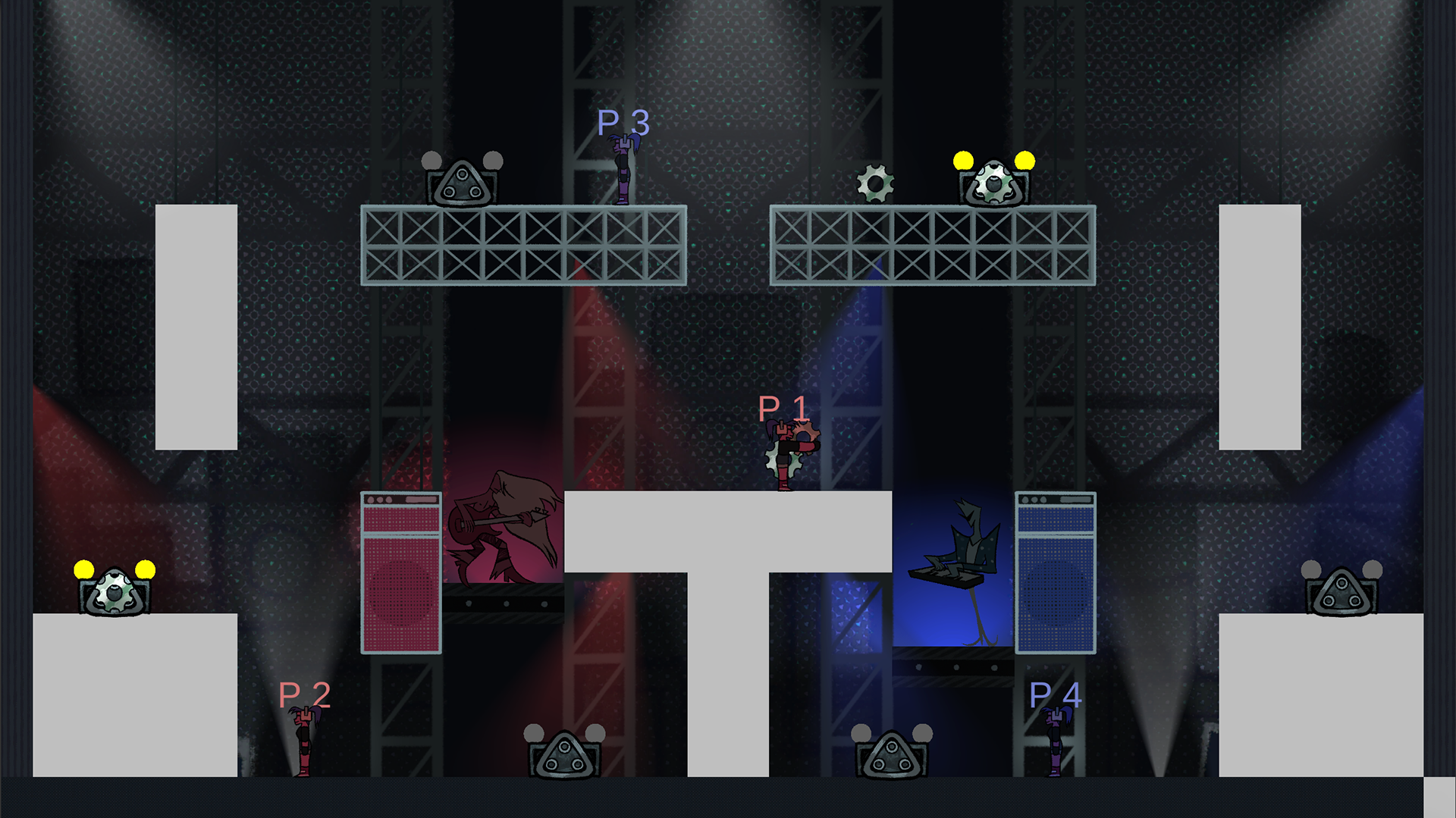
Level 2, created to explore the cog throwing mechanic by allowing players to easily toss cogs down into enclosed spaces on their side of the stage from a distance.

Level 3, an experiment in creating distance between machines by partially enclosing them.
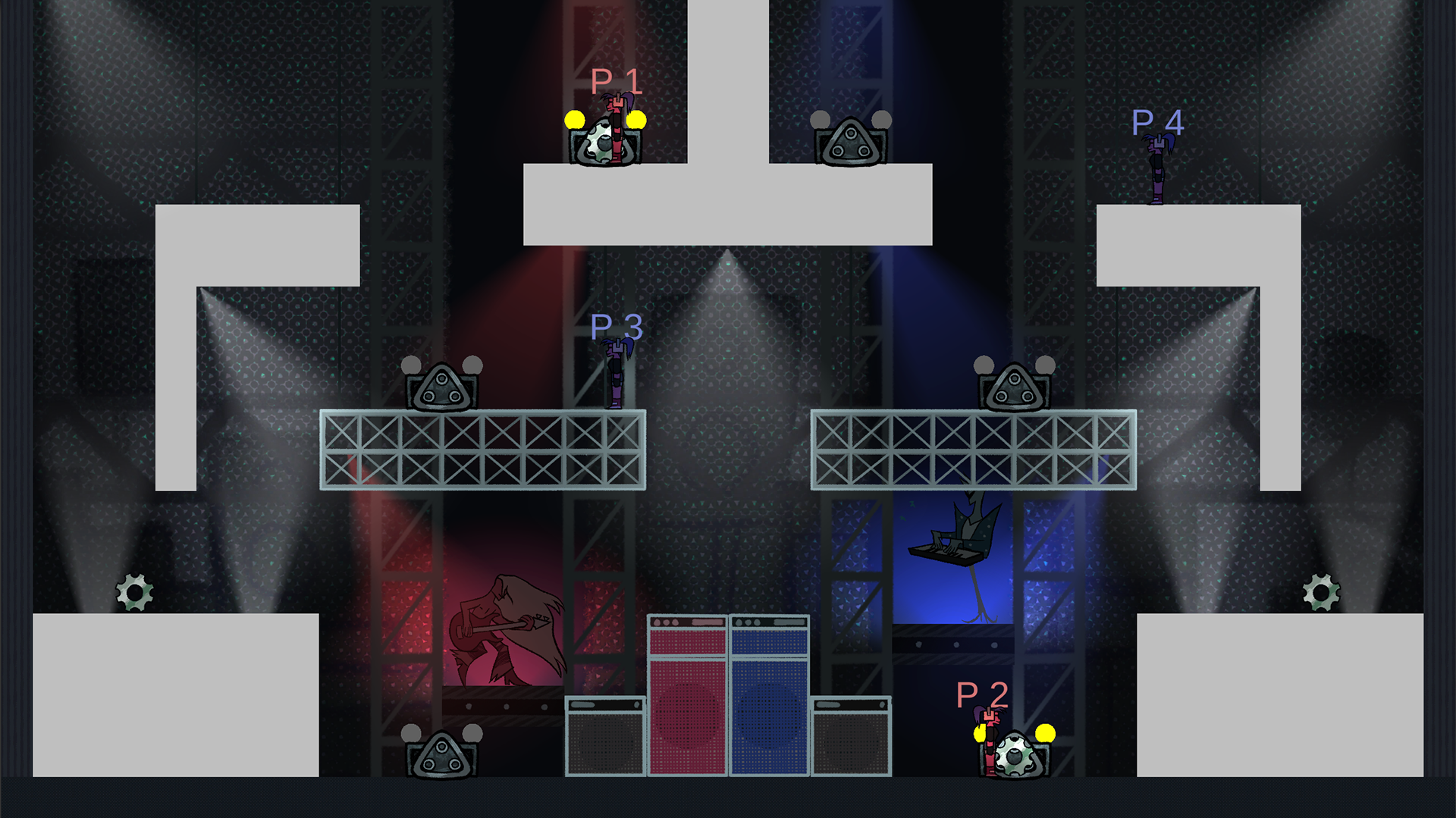
Level 4, an exploration of using high-up enclosures. This stage orginally featured both center machines directly next to each other, but the back-and-forth between teams was not well-recived by playtesters.

Level 5, widely considered to be the most fun by the playtesters, was an experiement in a more open design.
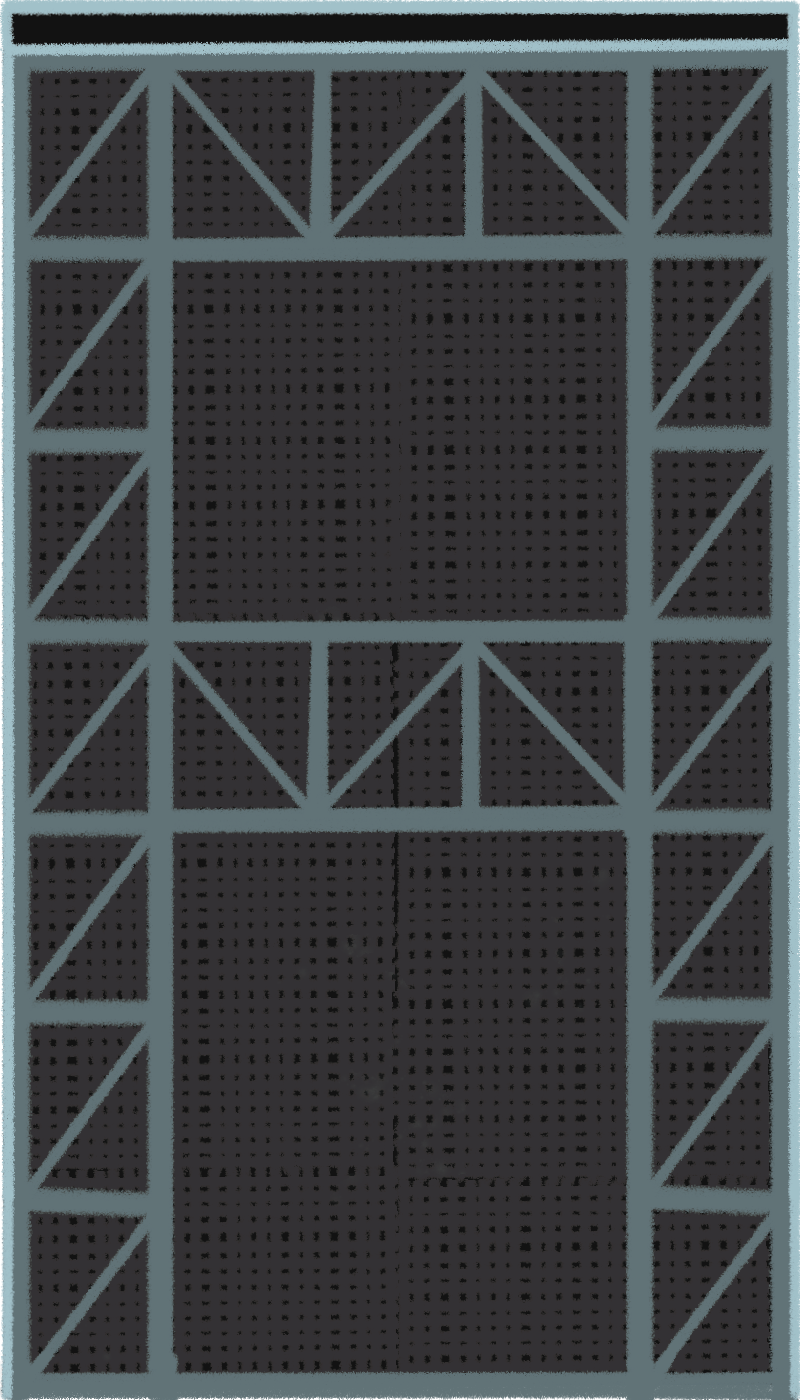
A unique platform created for Level 1
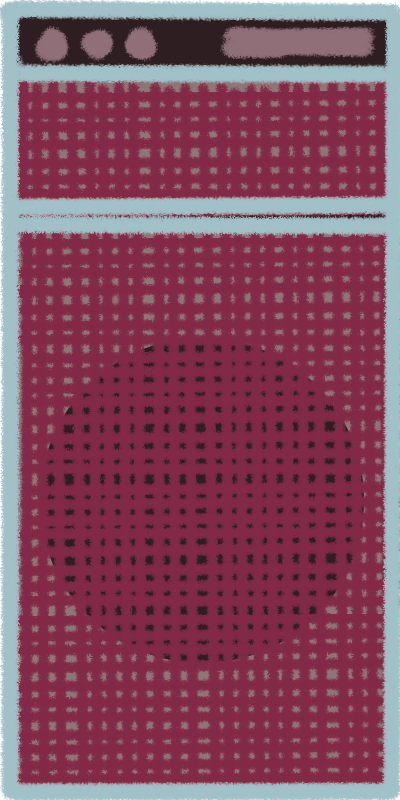
An amplifier used on Red Team's side in multiple leves

The Blue Team amplifier.
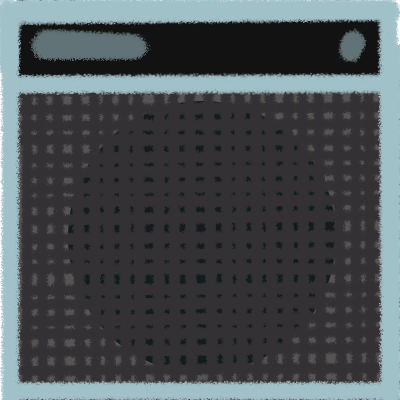
A speaker used in multiple levels
